Browse Primary Sources
Locate primary sources, including images, objects, media, and texts. Annotations by scholars contextualize sources.

Moonbeam Youth Training Center, Kenya
The video shows The Moonbeam Youth Training Centre in Mavoko, Nairobi. The Centre is a project of UN-HABITAT built with support from UN Secretary General Ban Ki Moon and UN-HABITAT Executive Director Mrs. Anna Tibaijuk. The purpose of the center is to improve housing in urban slums by training young people in low cost, alternative construction technologies.
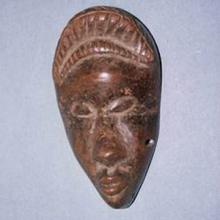
Dan Passport Masks
This small, mask ( 9.5 cm high and 5 cm wide) carved from wood is called a "passport" mask because it was worn on the body, kept in a leather pouch, or sewn onto a piece of cloth to represent group or family affiliation. Passport masks are used by the Dan people, a group of several hundred thousand people in the western part of the Côte d’Ivoire and into Liberia.
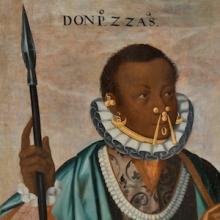
Los tres mulatos de Esmeraldas
This is a painting entitled “The Mulatto Gentlemen of Esmeraldas” from Spanish America. The painting was made in 1599 by a relatively well-known indigenous painter who was working in Quito at the time, a man named Andrés Sánchez Gallque.
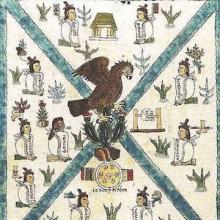
Codex Mendoza
This image shows the front piece of the Codex Mendoza which is believed to have been commissioned by the first viceroy of New Spain, Don Antonio de Mendoza in the 1540 to record information about the Aztecs and their empire. For example, the front piece shown in the image contains information about the organization and foundation of the Tenochtitlan, the capital of the Aztec empire.
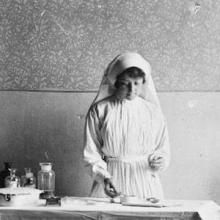
Florence Farmborough’s Journal
Florence Farmborough was an English nurse working on the Russian front during World War I. Her diary contains many descriptive, lively accounts of the war and the very active role played by women, both in the traditional role as caretakers of the wounded, but also as fighters.
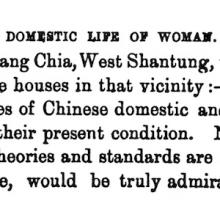
Missionary Journal, Chinese Culture
This article was published in a missionary journal printed in the cities of Fuzhou and Shanghai. The Chinese Recorder and Missionary Journal operated between 1868 and 1912. It was read by English-speakers living in the major cities of China as well as abroad.
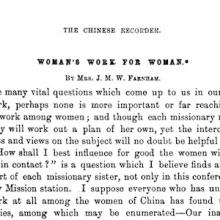
Women’s Work for Woman
This article was published in a missionary journal printed in the cities of Fuzhou and Shanghai. The Chinese Recorder and Missionary Journal operated between 1868 and 1912. It was read by English-speakers living in the major cities of China as well as abroad. In this paper, Mrs. Farnham addresses her “missionary sisters” on the matter of working to convert Chinese women.
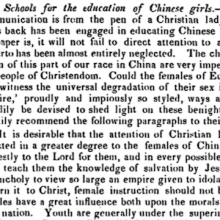
Schools for the Education of Chinese Girls
This article was published in a Protestant missionary journal based in Canton that operated from 1832 until 1851. Its readership included both the foreigners living in Canton and home religious communities in Britain and the United States.
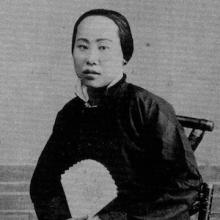
Foot Binding
This photograph presents a very different vision of foot binding from that depicted by Western observers in the 19th century. Whereas Western visitors to China seemed most interested in the bound foot unbound, as deformity or fetish, this photo shows the bound foot as it had meaning in Chinese culture: as part of clothing or fashion.
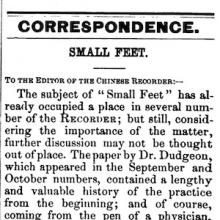
Missionary Journal, Foot Binding 3
This article and corresponding letter were both written in response to J. Dudgeon’s piece, “The Small Feet of Chinese Women,” The Chinese Recorder and Missionary Journal 2 (1869): 93-96. This journal was printed in the cities of Fuzhou and Shanghai between 1868 and 1912. It was read by English-speakers living in the major cities of China as well as abroad. Dr. Kerr responds to Dr.

Missionary Journal, Foot Binding 2
This article was published in a missionary journal printed in the cities of Fuzhou and Shanghai. The Chinese Recorder and Missionary Journal operated between 1868 and 1912. It was read by English-speakers living in the major cities of China as well as abroad. The article takes up a subject that excited great interest among Western residents of China: foot binding.
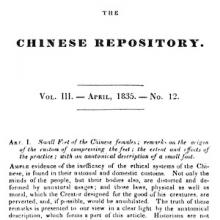
Missionary Journal, Foot Binding 1
This article was published in a Protestant missionary journal, based in Canton, that operated from 1832 until 1851. Its readership included both the foreigners living in Canton and home religious communities in Britain and the United States.
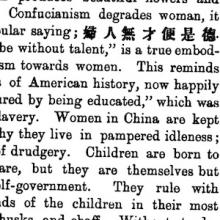
The Ethics of Christianity and Confucianism Compared
This selection is the ninth of ten sections in an article comparing Confucianism and Christianity. The article was published in a missionary journal printed in the cities of Fuzhou and Shanghai. The Chinese Recorder and Missionary Journal operated between 1868 and 1912. It was read by English-speakers living in the major cities of China as well as abroad.
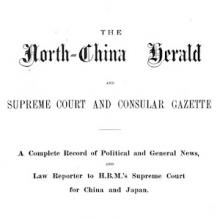
The Natural History of a Chinese Girl
This excerpt is part of a serial article entitled “The Natural History of a Chinese Girl,” which ran between July 4, 1890, and July 18, 1890. The North China Herald and Supreme Court and Consular Gazette was a secular newspaper published in Shanghai between 1870 and 1941, enjoying a wide readership among the foreign communities along the Chinese coast.
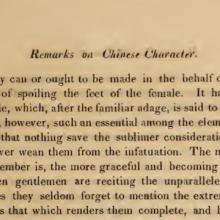
Remarks on Chinese Character and Customs
This article was published in a Protestant missionary journal, based in Canton, that operated from 1832 until 1851. Its readership included both the foreigners living in Canton and home religious communities in Britain and the United States.
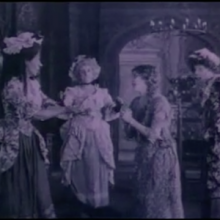
Cinderella (1914)
Slotted to premier on Christmas week, Famous Players’s Cinderella (1914) was marketed as a child-friendly fantasy for the whole family whose cutting-edge cinematography would bring to life the popular fairytale of rags-to-riches girlhood. However, Cinderella was foremost conceived as a vehicle for rising star Mary Pickford.

Soviet Policy Towards the West: The Gorbachev Challenge
As President George H. W. Bush took office in January 1989, factions within his administration disagreed concerning the approach to take with regard to US-Soviet relations.
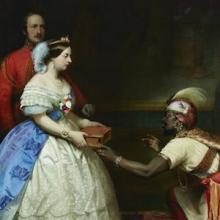
The Secret of England's Greatness
There are many paintings that represent the British Empire, but The Secret of England’s Greatness (1863) by Thomas Jones Barker is one of the most powerful. It depicts Queen Victoria presenting a bible to a kneeling African chief in the Audience Chamber at Windsor. In the background are her husband, Albert, and members of the government.